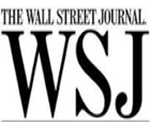
WSJ: A recent report by Greenwich Associates found that 26% of corporate bond volume was traded electronically in the third quarter of 2018, up from 19% in the first quarter.

WSJ: A recent report by Greenwich Associates found that 26% of corporate bond volume was traded electronically in the third quarter of 2018, up from 19% in the first quarter.

CryptoDaily: According to Greenwich Associates, 57% of executives working on blockchain initiatives said that implementing distributed ledger technology (DLT) at the enterprise level has been harder than expected...

The Desk: Greenwich Associates has announced this year’s market structure trends, reporting that markets will remain volatile and exchanges will become more important.

Brink Asia: Greenwich Associates’ research shows that 42 percent of Asian institutional investors expect allocations to private equity to “significantly increase” in the next three years.

Markets Media: Greenwich Associates highlighted the growing importance and size of exchanges in its outlook for this year, Top 9 Market Structure Trends for 2019.

Curatia: Greenwich Associates peered into the swirling mists and predicted that last year’s emphasis on data initiatives will segue into a 2019 focus on “gathering, storing, analyzing, and acting on data more systematically."

Business Leader: Research from Greenwich Associates has shown that alternative data spending is expected to increase in 2018 for both hedge funds and asset managers, with 74% of hedge funds planning to boost their alt data spending in...

Reuters: Penny pinching led to an average budget cut by asset managers of about 20 percent in 2018, with a reduction of another 5 percent to 6 percent expected in 2019, according to Greenwich Associates.
Bloomberg: “Trading desks are full of people who have yet to experience a period of prolonged volatility in their career,” Kevin McPartland said. “It seems likely they’re going to get that experience in 2019.”
Bloomberg: Treating ETFs as a class of assets independent from stocks is among the nine biggest market structure trends for 2019, according to a report from Greenwich Associates.